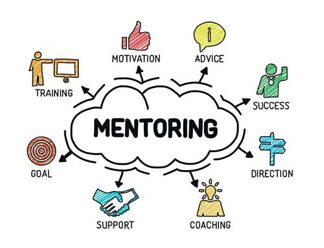|
Starting a new job can be both exciting and nerve-wracking, especially for teachers. Whether you are a seasoned educator or a fresh face in the field, beginning anew in a different school can be an opportunity for growth, learning, and making a lasting impact. In this blog post, we will explore the joys and challenges of starting fresh as a teacher in a new educational environment and provide some valuable tips to help you navigate this exciting journey.
Tips for Teaching in a New School Embrace the Opportunity for Growth Starting fresh in a new school offers a unique chance for personal and professional growth. Here are a few ways you can embrace this opportunity:
Building relationships is a crucial aspect of teaching. In a new school, you have the chance to connect with a fresh group of students, parents, and colleagues. Here's how you can foster positive relationships:
Every school has its unique culture and values. Understanding and aligning with these can help you integrate smoothly:
Starting fresh can be challenging, and you may encounter obstacles along the way. Here are some tips for staying positive and resilient:
Starting fresh in a new school is a chance to reinvent yourself as an educator and make a meaningful impact on the lives of your students. Embrace the opportunity for growth, build positive relationships, learn the school culture, and stay positive and resilient in the face of challenges. Remember that each day is a new opportunity to inspire and shape the future, and your dedication as a teacher will leave a lasting legacy in your new school community.
0 Comments
 As a leader, it is my responsibility to not only manage my team but also to inspire and motivate them to reach their full potential. One of the most effective ways to do this is by leading by example. By setting a positive example, I can encourage my staff to thrive and achieve their goals. Firstly, I believe that it is important to be a role model for my team. This means that I must demonstrate the qualities and behaviours that I expect from my staff. For example, if I want my team to be punctual and reliable, I must ensure that I am always on time and meet my deadlines. By doing so, I can show my team that I value these qualities and that they are essential for success. Secondly, I believe that it is important to provide my staff with opportunities for growth and development. This can be achieved by offering training and development programs, as well as by providing feedback and coaching. By investing in my staff's development, I can help them to acquire new skills and knowledge, which can help them to perform better in their roles. Thirdly, I believe that it is important to recognize and reward my staff's achievements. This can be done through formal recognition programs, such as employee of the month awards, or through informal recognition, such as a simple thank you or a pat on the back. By acknowledging my staff's hard work and achievements, I can help to boost their morale and motivation. In conclusion, leading by example is a powerful tool for encouraging my staff to thrive. By being a role model, providing opportunities for growth and development, and recognizing and rewarding achievements, I can help my team to reach their full potential and achieve their goals. As a leader, it is my responsibility to create a positive and supportive environment that enables my staff to succeed.  As educators, it is our responsibility to provide our students with the tools and resources they need to succeed. However, it is equally important to empower them to take control of their own learning. Allowing students to take the reigns in their education can have numerous benefits for both the students and the educators. Firstly, when students are given the opportunity to take control of their own learning, they become more engaged and invested in the process. They are more likely to take ownership of their education and feel a sense of responsibility for their own success. This can lead to increased motivation and a desire to learn more. Secondly, allowing students to take the reigns in their education can lead to a more personalized learning experience. Every student learns differently, and by giving them the freedom to choose how they learn, educators can cater to each student's individual needs and preferences. This can lead to a more effective and efficient learning experience for everyone involved. Thirdly, when students are given the opportunity to take control of their own learning, they develop important skills such as critical thinking, problem-solving, and decision-making. These skills are essential for success in both academic and professional settings, and by fostering them in the classroom, educators are setting their students up for success in the future. In conclusion, allowing students to take the reigns in their education can have numerous benefits for both the students and the educators. By empowering students to take control of their own learning, educators can create a more engaging, personalized, and effective learning experience. Additionally, students develop important skills that will serve them well in the future. As educators, it is our responsibility to provide our students with the tools they need to succeed, but it is equally important to give them the freedom to use those tools in their own unique way. 1.Two Truths and a Lie: This is a simple icebreaker game that helps build trust and familiarity among the group. Participants take turns sharing three statements about themselves, with two being true and one being a lie. The others then have to guess which statement is the lie.
2.Word Association: In this game, one participant starts by saying a word, and then each person in turn says a word that is associated with the previous word. This continues until someone can't think of a word, at which point a new word is introduced. 3.What's in Your Bag?: Participants bring a bag or briefcase to the meeting, and each person takes turns showing the group what they have inside. This can lead to interesting conversations and reveals a bit about each person's personality and interests. 4.Reverse Brainstorming: In this activity, instead of coming up with new ideas, the group focuses on coming up with reasons why a particular idea wouldn't work. This helps individuals think more critically and creatively. 5.Networking Bingo: This game helps break the ice and encourage attendees to interact with each other. Each participant is given a bingo card with different categories, such as job title, hobbies, etc. The goal is to find someone who fits each category and get their signature or initial on the card. The first person to get a bingo is the winner. 6.Speed Networking: Participants move from one person to another in a set amount of time, introducing themselves and exchanging information. This activity helps participants make connections and develop relationships with others in a fast-paced and dynamic environment. 7.Human Knot: Participants stand in a circle, facing each other. Each person takes hold of the hand of two other people who are not next to them. The group then has to work together to untangle themselves without letting go of each other's hands. 8.Scavenger Hunt: Participants are divided into teams and given a list of items to find or tasks to complete within a set amount of time. This game encourages teamwork and communication, as well as getting participants moving and exploring the area. 9.Minute to Win It: Participants are given a set of tasks to complete within one minute. These can range from simple tasks like stacking cups to more challenging ones like bouncing a ping pong ball into a cup. 10.Trust Walk: Participants are paired up, with one person blindfolded and the other leading them through a course or around the room. This activity helps build trust and communication skills between the participants. 11.Name That Tune: Participants are divided into teams and play a game of Name That Tune, where they have to guess the title and artist of a song that is played for them. This activity helps build teamwork and encourages participants to work together to solve the challenge. 12.Simon Says: This classic game can be a fun way to get participants moving and following instructions. The leader calls out commands, such as "Simon says touch your toes," and participants have to follow the command if it starts with "Simon says." 13.Pass the Message: Participants are divided into teams and given a message to pass from one person to another without speaking. This can be done through gestures, pantomime, or other nonverbal cues. The first team to accurately pass the message wins. 14.Group Juggle: Participants work together to keep a number of objects (such as balls or beanbags) in the air, passing them back and forth between the group. This activity helps build teamwork and coordination skills. 15.Ball Toss: Participants stand in a circle and take turns tossing a ball to each other, while saying each other's name and a positive attribute. This activity helps build connections and positive relationships among the group. 16.The Hula Hoop Game: Participants stand in a circle, with a hula hoop being passed around the circle. When the music stops, the person holding the hula hoop must perform a task or answer a question. This game encourages movement and helps participants get to know each other better. 17.Picture This: Participants are given a piece of paper and a pen, and are asked to draw a picture that represents a given word or phrase. This activity helps build creative problem-solving skills and encourages participants to share their ideas with the group. 18.Tower of Popsicle Sticks: Participants are divided into teams and given a set of Popsicle sticks and other materials. The goal is to build the tallest tower possible within a set amount of time. This game helps build teamwork, communication, and problem-solving skills. 19.Two Truths and a Movement: Similar to Two Truths and a Lie, but instead of sharing a lie, participants share a physical movement that represents something about themselves. This activity helps participants get to know each other and encourages movement. 20.Fishbowl: Participants stand in a circle and one person starts by saying something about themselves, such as a personal story or an experience. The next person then says something that connects to the first person's story, and the circle continues until everyone has had a turn to share. This activity helps build connections and encourages participants to engage with each other on a deeper level.  As an educator, it is important to constantly strive for growth and improvement. One of the most effective ways to achieve this is by seeking out a mentor who can provide guidance and support. In this essay, I will discuss the benefits of having a mentor and why I am actively seeking one to help me grow as an educator. First and foremost, a mentor can provide valuable insight and advice based on their own experiences. They have likely faced similar challenges and obstacles in their own career and can offer guidance on how to navigate them. Additionally, a mentor can provide constructive feedback on teaching strategies and classroom management techniques, helping me to improve my skills and become a more effective educator. Furthermore, a mentor can serve as a source of motivation and inspiration. Seeing someone who has achieved success in their own career can be incredibly motivating and can help me to set and achieve my own goals. Additionally, a mentor can provide encouragement and support during difficult times, helping me to stay focused and motivated. Another benefit of having a mentor is the opportunity to build a professional network. A mentor can introduce me to other educators and professionals in the field, providing opportunities for collaboration and professional development. This can lead to new ideas and perspectives, as well as potential career opportunities down the line. In conclusion, seeking out a mentor is an important step in the growth and development of any educator. The benefits of having a mentor are numerous, including valuable insight and advice, motivation and inspiration, and the opportunity to build a professional network. As I continue to grow in my career, I am actively seeking a mentor who can help me to become the best educator I can be.  Our society is braided with diversity, and it is our responsibility as educators to provide an open and welcoming learning environment for all students. To do so, we must make cultural understanding a core component of our teaching practise. We can build an environment in which everyone feels valued and loved by recognising and embracing our students' different cultural origins and opinions. We will discuss three strategies of cultural awareness an educator can build into their week and how it may lead to more meaningful and successful teaching experiences. 1.Fostering Inclusivity: Educators must provide a safe and inclusive learning environment for all students. Cultural awareness may assist educators in recognising and appreciating the diversity of their students, as well as ensuring that everyone's needs and perspectives are respected. This includes creating lesson plans and activities that reflect a variety of cultures and practises, in addition to addressing any biases or assumptions that may exist in the classroom. 2.Enhancing Communication: Cultural understanding may also help educators engage with their students and families more successfully. Understanding diverse countries' cultural norms and expectations may help teachers alter their communication style and approach, as well as build stronger relationships with their students. This can lead to improved interest and participation in the classroom, as well as more successful cooperation with parents and carers. 3.Getting Students Ready for the Global Community: Cultural understanding is becoming increasingly vital for success in both personal and professional life in today's interconnected globe. Educators may assist their students prepare for a varied and demanding global environment by teaching cultural understanding in the classroom. This includes training students to value and respect cultural differences, to communicate successfully with people from different backgrounds, and to work together to solve complicated challenges. Educators may contribute to create a more equal and peaceful environment for everybody by developing these traits and ideals in their students. Finally, cultural awareness is an essential skill for educators who want to provide a welcoming and helpful learning environment for their students. By supporting inclusion, increasing communication, and establishing cultural competency, educators may assist to guarantee that all students in the classroom feel valued and appreciated. Embracing diversity is a method of unlocking the potential of all students, regardless of their origin or cultural identity. As educators, we have a responsibility to include diversity and cultural awareness into our teaching methods and to enable our students to become global citizens who recognise and appreciate the richness of various cultures and viewpoints. By doing so, we may contribute to a more inclusive and linked society. Conferences as exciting as they are can sometimes be lonely places. Coming with learning in mind we can forget to connect with others who are on the same learning journey. Here are 50 strategies you can use to get the most out of your experience.
"5 Strategies for Creating an Engaging Classroom: How to Set Up Your Classroom for Student Success"21/4/2023 Create a Welcoming Atmosphere: Creating an engaged classroom begins with establishing a welcoming atmosphere. Students who feel comfortable and included in the classroom are more likely to be engaged and participate in class activities. Here are some tips for creating a welcoming classroom environment. Consider Seating Arrangements Seating arrangements can have a big impact on classroom engagement. Arranging desks in a circle or semi-circle can encourage discussion and collaboration. Groups of desks can facilitate group work and encourage interaction. Individual desks arranged in rows may be more suitable for individual work, but may not be as conducive to collaboration and discussion. Think About Lighting Lighting can also play a role in creating a welcoming atmosphere. Natural lighting is ideal, but not always possible. Consider using soft lighting, such as lamps or string lights, to create a cozy and welcoming environment. Avoid harsh fluorescent lighting, which can be off-putting and create a sterile atmosphere. Incorporate Décor Décor can help make the classroom feel more inviting and comfortable. Use color to create a warm and welcoming environment. Display student work, posters, and other decorations that reflect the interests of your students. Consider using plants or other natural elements to create a calming environment. Encourage Interaction and Collaboration Arrange your classroom to encourage interaction and collaboration among students. Cluster desks together to encourage group work and discussion. Provide comfortable seating areas where students can work in small groups or pairs. Encourage students to share their ideas and work together to solve problems. Establish a Sense of Community Creating a sense of community in the classroom can help students feel included and engaged. Greet students warmly when they arrive and make an effort to get to know them individually. Encourage students to share their interests and hobbies with the class. Celebrate student successes and make sure each student feels valued and appreciated. Creating a welcoming atmosphere in the classroom takes effort, but it can have a big impact on student engagement. When students feel comfortable and included, they are more likely to participate in class activities and be engaged in their learning. By considering seating arrangements, lighting, décor, and encouraging interaction and collaboration, you can create a classroom that fosters engagement and academic success. Set Clear Expectations: Setting clear expectations is a crucial aspect of creating an engaged classroom. When students understand what is expected of them, they are more likely to be motivated to meet those expectations. Here are some tips for setting clear expectations in the classroom. Establish Clear Rules and Consequences Establishing clear rules and consequences is the foundation of setting expectations. Consider what rules are important for your classroom and make sure they are clearly communicated to your students. Examples may include respecting others, arriving on time, and using technology appropriately. Make sure that consequences for breaking rules are also clearly stated, and that they are consistent and fair. Communicate Expectations to Students Once rules and consequences have been established, it is important to communicate them to students. This can be done through a classroom discussion or a written document that is shared with students and their families. Make sure that students understand the importance of following these rules and the consequences for not following them. Be Consistent in Enforcing Expectations Consistency is key in enforcing expectations. If rules and consequences are not consistently enforced, students may become confused and lose motivation to follow them. Enforce rules and consequences fairly and consistently, and be transparent with your students about your expectations for their behavior and academic performance. Explain the Importance of Expectations Help students understand why it is important to follow expectations. Explain how following rules and meeting academic expectations can lead to success in school and in life. Encourage students to take ownership of their learning and behavior, and to understand that their actions have consequences. Provide Feedback on Performance Provide feedback to students on their academic performance and behavior. This feedback can help students understand how they are meeting expectations and where they can improve. Offer specific and constructive feedback that helps students learn and grow. Setting clear expectations is essential for creating an engaged classroom. By establishing clear rules and consequences, communicating expectations to students, being consistent in enforcing them, explaining the importance of expectations, and providing feedback on performance, you can create a classroom where students feel motivated and engaged in their learning. Use Varied Teaching Strategies: Using varied teaching strategies is another key aspect of creating an engaged classroom. Students learn in different ways, so using a variety of teaching strategies can help to keep all students engaged and motivated. Here are some tips for using varied teaching strategies in the classroom. Lectures Lectures can be an effective way to deliver information to students. However, it is important to keep lectures engaging and interactive. Use visual aids like PowerPoint presentations, diagrams, and images to break up the lecture and keep students interested. Pause periodically to ask questions and encourage discussion. Discussions Discussions can be a great way to engage students and encourage critical thinking. Use open-ended questions to encourage students to share their thoughts and ideas. Encourage active listening by asking students to summarize what their peers have said or by repeating key points. Keep discussions on track by redirecting the conversation if it veers off topic. Group Work Group work can help to promote collaboration and communication skills. Assign group projects or activities that require students to work together to solve a problem or complete a task. Make sure to provide clear instructions and guidelines for the group work, and monitor the groups to ensure that everyone is participating. Hands-On Activities Hands-on activities can help to make learning more interactive and engaging. Consider using manipulatives, models, or experiments to help students understand difficult concepts. These activities can also help to appeal to different learning styles. Technology Technology can be a valuable tool for engaging students in the classroom. Use multimedia elements like videos, images, and audio to enhance your lessons. Consider using educational apps or online resources to supplement your instruction. Use digital tools like interactive whiteboards or tablets to allow students to actively participate in the lesson. By using varied teaching strategies, you can create a classroom that engages all students and appeals to different learning styles. Lectures, discussions, group work, hands-on activities, and technology can all be effective tools for keeping students engaged and motivated. Be sure to choose strategies that are appropriate for your students and your teaching style, and don't be afraid to try new things. Encourage Student Participation: Encouraging student participation is another crucial aspect of creating an engaged classroom. When students are actively participating in class, they are more likely to be motivated and invested in their learning. Here are some tips for encouraging student participation in the classroom. Ask Questions Asking questions is a simple but effective way to encourage student participation. Ask open-ended questions that require more than a one-word answer. Encourage students to think critically and share their thoughts and ideas. Be sure to listen to their responses and provide feedback to keep the conversation going. Encourage Discussion Discussion can be a great way to engage students and encourage participation. Create a classroom culture that values different perspectives and encourages respectful dialogue. Ask students to respond to each other's comments, and help to facilitate the conversation by redirecting the discussion if necessary. Provide Opportunities for Sharing Provide opportunities for students to share their thoughts and ideas. Consider using tools like polling software or discussion boards to encourage participation. These tools can help to make it easier for students to share their opinions and ideas in a low-pressure environment. Use Group Work Group work can help to promote participation and collaboration. Assign group projects or activities that require students to work together to solve a problem or complete a task. Make sure to provide clear instructions and guidelines for the group work, and monitor the groups to ensure that everyone is participating. Create a Safe and Supportive Environment Create a classroom environment that is safe and supportive. Encourage students to take risks and share their thoughts and ideas without fear of judgment. Be mindful of the language you use and the tone you set in the classroom, and be sure to model respectful behavior. Provide Feedback Provide feedback to students on their participation. Positive feedback can help to reinforce good behavior and encourage continued participation. Constructive feedback can help students understand how they can improve and contribute more effectively. Encouraging student participation can help to create a classroom environment where all students feel valued and invested in their learning. Asking questions, encouraging discussion, providing opportunities for sharing, using group work, creating a safe and supportive environment, and providing feedback are all effective ways to encourage student participation in the classroom. By implementing these strategies, you can help to create an engaged and motivated classroom. Foster a Positive Learning Environment: Creating a positive learning environment is crucial to fostering student engagement and success in the classroom. Students are more likely to be engaged and motivated when they feel supported and valued. Here are some tips for creating a positive learning environment in your classroom. Encourage and Celebrate Student Successes When students succeed, it's important to acknowledge and celebrate their achievements. Recognize student successes in a variety of ways, such as giving them praise in front of the class, awarding them with a certificate, or displaying their work. Celebrating student successes can help to build their confidence and encourage continued engagement. Be Supportive of Efforts to Improve It's important to provide support and encouragement to students as they work to improve their academic performance. Offer constructive feedback that is specific, actionable, and helps students learn and grow. Be patient and understanding with students who are struggling, and provide them with extra support when needed. Be Available for Questions and Support Outside of Class Time Make yourself available to students outside of class time. Encourage students to ask questions and seek help when needed. Provide opportunities for one-on-one support and feedback, such as office hours or after-school tutoring. Being available for students can help them feel supported and motivated to learn. Create a Respectful Classroom Environment Create a classroom environment that is respectful and inclusive. Encourage students to treat each other with respect and kindness, and model respectful behavior yourself. Be mindful of language and actions that could be hurtful or offensive, and address any instances of disrespectful behavior. Create Opportunities for Collaboration and Teamwork Collaboration and teamwork can be a great way to create a positive learning environment. Assign group projects or activities that require students to work together to solve a problem or complete a task. Make sure to provide clear instructions and guidelines for the group work, and monitor the groups to ensure that everyone is participating. Provide a Safe and Comfortable Physical Environment A comfortable and safe physical environment is essential to creating a positive learning environment. Ensure that the classroom is clean, well-lit, and well-ventilated. Provide comfortable seating and adequate workspace for students. Make sure that the classroom is free of hazards and that students feel safe and secure. In conclusion, creating a positive learning environment is essential to fostering student engagement and success in the classroom. Encourage and celebrate student successes, be supportive of their efforts to improve, be available for questions and support outside of class time, create a respectful classroom environment, create opportunities for collaboration and teamwork, and provide a safe and comfortable physical environment. By implementing these strategies, you can create a positive learning environment that supports student engagement and success. CONCLUSION: In conclusion, setting up a classroom with engagement requires several key strategies that work together to create a positive and supportive learning environment for students. The first step is to establish a welcoming atmosphere that encourages interaction and collaboration among students. Clear expectations should be set for student behavior and academic performance, with consistent enforcement and communication of rules and consequences. Varied teaching strategies should be used, incorporating multimedia elements and technology to keep students interested and engaged. Encouraging student participation through questioning and discussion, as well as tools such as polling software, is also crucial. Finally, fostering a positive learning environment requires celebrating student successes, being supportive of their efforts to improve, being available for questions and support outside of class time, creating a respectful classroom environment, creating opportunities for collaboration and teamwork, and providing a safe and comfortable physical environment. By implementing these strategies, teachers can create a classroom environment that supports student engagement, learning, and success.
Introduction Congratulations! You've accepted a job as a physical education teacher and are ready to start. But before you get too excited about the challenges ahead, I encourage you to pause for a moment and think about what is before you. The success of your first 100 days as a PE teacher depends on the foundation you lay now: small steps taken with care will lead to big gains later on when both you and your students find success in their academic lives. Consider what you do today allows you to be better tomorrow. What you do tomorrow allows you to be better next week. What you do next week allows you to be better next month and so on. Here are some tips on making sure everyone's doing just that: Know your audience
As a PE teacher, you'll be teaching in a variety of ways. You may be teaching the same sport but using different teaching strategies and techniques to keep your students engaged. Or maybe you're working with different age groups and therefore have different expectations for your students' behaviour. Or maybe your school has different needs than other schools do when it comes to physical education (PE). Whatever the case may be, there are many ways to approach this subject matter as an educator--and there's no right or wrong way! The best thing you can do is create an environment where everyone feels welcome and included in whatever activities they enjoy most so that all students can reach their fullest potential physically, emotionally, and socially while learning valuable life skills along the way. Find out what's happening in the world of physical education As a physical education teacher, you are responsible for developing and implementing programs that will promote health and fitness. In order to do this, you need to know what's happening in the world of physical education so that you can keep up with trends. To help guide you through this new territory, here are some things we've learned about how things work:
The best way to get the most out of your first 100 days is to understand the needs of your students and the needs of the school community.
Congratulations! You've landed your job as a physical education teacher, and now just take a deep breath, relax and be the most fun version of yourself you can be. You have a whole career ahead of you to discover your micro passions but for now just embrace your career. |





 RSS Feed
RSS Feed